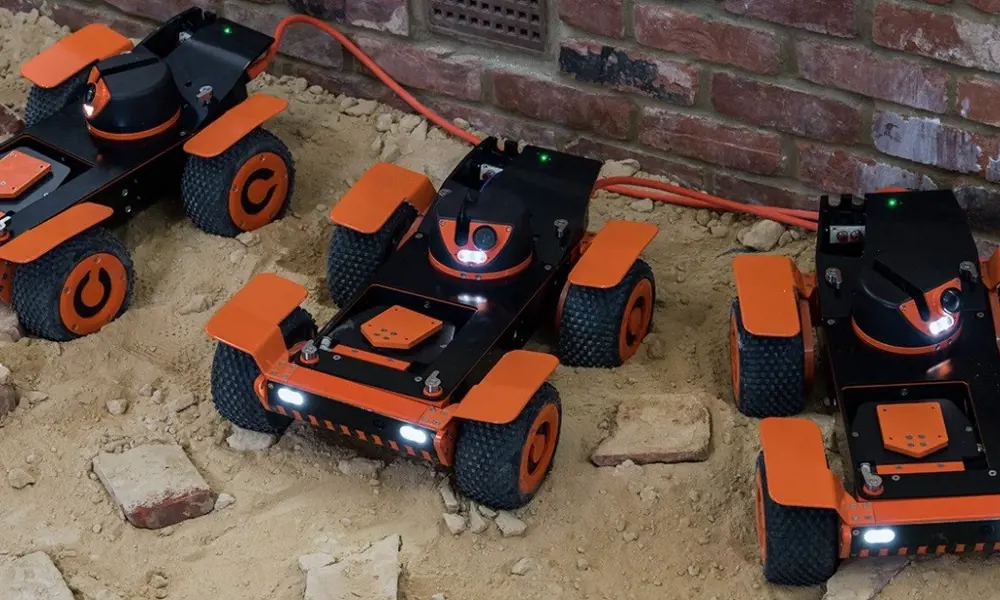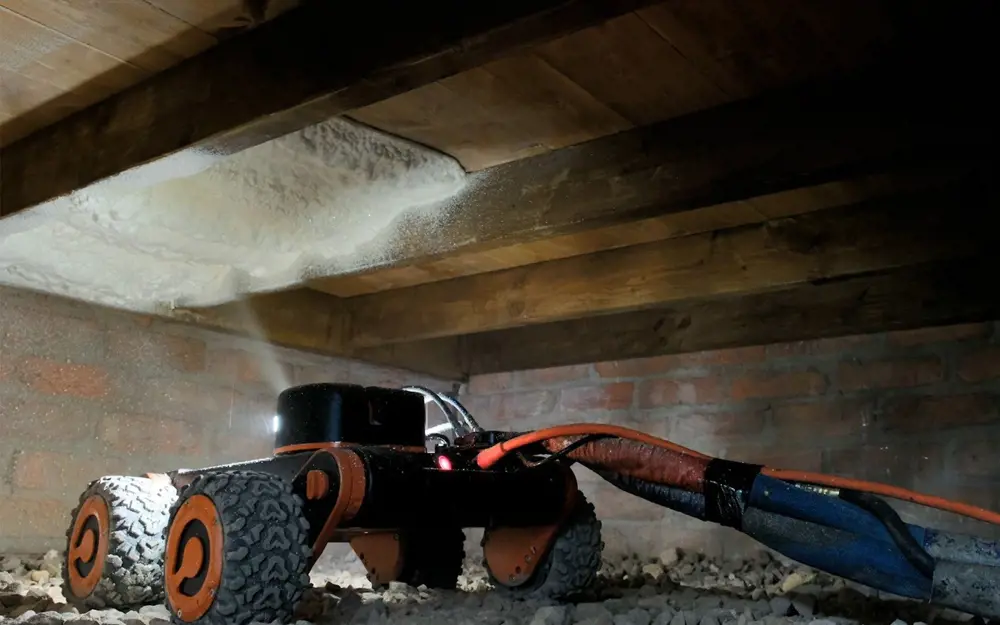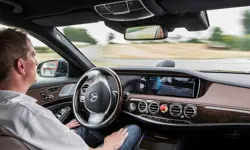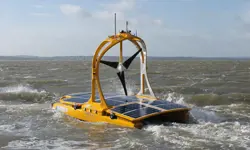
Heating homes with robots
The need for a more convenient way to install underfloor insulation arose in a conversation between architect Tom Lipinski and Peter Childs, a professor in engineering design. Along with Q-Bot CEO Mathew Holloway, they addressed the challenge of insulating older housing with the development of a fleet of mini robots that use the Q-Bot team’s expertise in architecture, heat transfer, robotics, data management, and business and technology management throughout the whole installation process. In 2014, the first trial of the robots demonstrated an 80% reduction in heat loss through the floor and a saving on fuel bills for residents of up to £300 a year.
Insulating homes with suspended wooden floors often involves removing furniture, carpets and floorboards, then cutting and fitting insulation between floor joists before refitting the floorboards and carpets, which can be an expensive, time-consuming and messy process. A Q-Bot robot can fit insulation in one to two days, creating little or no waste.
Q-Bot allows insulation to be installed in houses without ripping up the floorboards. Its technology includes a survey robot that can be inserted into the underfloor cavity to inspect the area and produce a computer-aided-design model from the sensor array the robot carries. SurveyBot can enter inaccessible and hazardous areas such as crawl spaces, cable trenches and sewers. The robot creates accurate 3D textured maps with visual and thermal information, and can see in the dark. After SurveyBot has produced the model, the property can be assessed and a decision taken on whether to book a treatment.
Q-Bot allows insulation to be installed in houses without ripping up the floorboards

A Mark 6.3 Q-Bot robot in action
If installation goes ahead, the company then deploys its Spraybot in the underfloor space. Spraybot consists of a sensor array, a spray turret that carries an automated spray-nozzle, chassis, drivetrain and supply tube, and can apply thermally insulating material to the underside of the suspended flooring. It uses powerful motors and independent suspension to climb over the kind of obstacles that might be found underneath suspended floors and enables the robot to pull the umbilical that supplies the materials for the spray.
The company experimented with different levels of autonomy for the robots, but eventually found that a blended approach was best suited to the application. The technology combines tele-operation, using camera vision, and human inspection with autonomous sensing, motion and material spraying. With support from the Royal Academy of Engineering’s Enterprise Hub, the EU’s Horizon 2020 programme and Innovate UK, the company has been able to scale up its high-tech construction, robotics and retrofit business. The technology is completely manufactured in the UK, and each robot produced increases employment for each of the robot operating teams.
The company is working with housing associations and local authorities to install underfloor insulation in their properties across the UK as part of a drive to address fuel poverty. Each home that is insulated sees a 14% reduction in energy usage for heating, and a reduction of CO2 emissions of 14,000 kilograms CO2e over the 42-year nominal lifespan of the insulation.
***
This article has been adapted from "Heating homes with robots", which originally appeared in the print edition of Ingenia 76 (September 2018).
Keep up-to-date with Ingenia for free
SubscribeRelated content
Technology & robotics

When will cars drive themselves?
There are many claims made about the progress of autonomous vehicles and their imminent arrival on UK roads. What progress has been made and how have measures that have already been implemented increased automation?

Autonomous systems
The Royal Academy of Engineering hosted an event on Innovation in Autonomous Systems, focusing on the potential of autonomous systems to transform industry and business and the evolving relationship between people and technology.

Hydroacoustics
Useful for scientists, search and rescue operations and military forces, the size, range and orientation of an object underneath the surface of the sea can be determined by active and passive sonar devices. Find out how they are used to generate information about underwater objects.

Instilling robots with lifelong learning
In the basement of an ageing red-brick Oxford college, a team of engineers is changing the shape of robot autonomy. Professor Paul Newman FREng explained to Michael Kenward how he came to lead the Oxford Mobile Robotics Group and why the time is right for a revolution in autonomous technologies.
Other content from Ingenia
Quick read

- Environment & sustainability
- Opinion
A young engineer’s perspective on the good, the bad and the ugly of COP27

- Environment & sustainability
- Issue 95
How do we pay for net zero technologies?
Quick read

- Transport
- Mechanical
- How I got here
Electrifying trains and STEMAZING outreach

- Civil & structural
- Environment & sustainability
- Issue 95